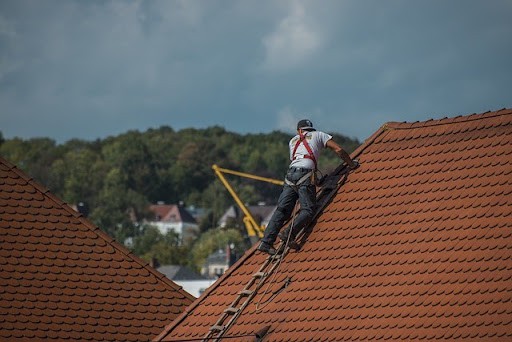Roofing is a crucial component of any home. It protects the interior from rain, wind, and snow while also providing an aesthetic finish to the exterior. There are many factors that go into choosing the right roof for your new home. This article will outline how to choose between asphalt shingle roofs, metal roofs, clay tile roofs, concrete tile roofs, slate roofs, and more!
Asphalt Shingle Roofs
Contents
Asphalt shingle roofs are one of the most common types of roofing materials in North America and many other parts of the world. This is because asphalt shingle roofs have been found to be cost-effective and they wear extremely well over time. Asphalt is very minimal maintenance since it doesn’t need to be repaired often, only needing a few repairs in its lifetime. These roofs can last anywhere from 20-40 years in climates north of Georgia for example. However, in harsher climates such as Alberta where there is more snowfall, asphalt shingle roofs may degrade faster or become damaged quicker due to the extra weight of the snow.
Asphalt shingle roofs are readily available in most areas, with custom colors and styles available depending on where you purchase them from. When we talked with Dom Restoration & Roofing contractors, they explained to us how the installation of asphalt shingle roofs is relatively easy, with a standard crew being able to complete a job in approximately 2-3 days depending on the size of your home. The price range for an asphalt shingle roof is going to depend on your location and building material costs at that given time. One drawback that some people have been finding with asphalt shingle roofs is that the asphalt tends to dry and crack over time, leaving an unsightly appearance.
Metal Roofs
Metal roofs are gaining in popularity due to their durability and unique finishes. Metal roofs come in a variety of style options: standing seam, corrugated, and panelized roofing. Standing Seam panels go well on most residential homes and also work well in commercial applications such as gas stations or schools. Corrugated metal roofs work especially well in industrial environments where there is less traffic and harsh conditions occur often.
The panelized roofing option is much like the standing seam but it uses much thicker metal sheets for strength and durability when heavy snowfall occurs. One drawback with metal roofs is that they can be quite expensive when compared to other roofing materials such as asphalt shingle roofs. Depending on the kind of metal sheets being used, it is not uncommon to pay anywhere from $2-15 per square foot for a metal roof, and it may be necessary to use more than one type of metal, based on the design and style you wish to install.
Clay Tile Roofs
Tile roofs are made out of clay or concrete and they come in various color patterns, styles, and textures that can be molded into almost any shape imaginable. The tile comes in pre-assembled panels which makes them very easy to install as long as you have an experienced installer on hand. Compared with other types of tiles such as slate or concrete, clay tiles tend to weigh less which means they require less reinforcement when installing them onto existing roofs. The average price for a clay tile roof is going to be upwards of $10-18 per square foot which makes them one of the more expensive options when compared to other types of roofs such as metal or asphalt shingle roofs.
Slate Roofs
Slate roofs have been around for many years and they are made from a fine-grained rock with a uniform appearance. The unique appearance of slate is due to how the individual tiles look combined underneath a microscope. Slate has been found to last roughly 50 years before needing replacement which can make them expensive but well worth it in the long run. One drawback that some people experience with slate roofs is that there may be an almost 200% increase in weight if you live in an area such as Canada where there is heavy snowfall. Because of this, it may be necessary to use more reinforcement when installing the slate tiles onto your existing roofing system.
Concrete Tile Roofs
Concrete roofs are also becoming more popular in certain parts of the world due to their durability and reasonable price tag. Similar to asphalt shingle roofs, they are made up of cement which is then saturated with sand or gravel for added durability. The concrete roof can come in either “lightweight” or “compact” varieties depending on what type of environment you live in. For example, lightweight concrete tiles work well for areas where you receive frequent rainfall while compact tiles work well for areas that experience less rain over time. One major drawback with concrete roofs is that they cannot be applied to homes that have an existing roof. If you live in an area that gets heavy snowfall, it may be necessary to install a slope along the edge of your roof so that any snow accumulation can easily slide off.
There are many different types of roofing materials to choose from and each one has its own pros and cons. We hope this article helped you narrow down the options for your next home design project so that you can make an informed decision about what type of roof is best suited for your needs. If all of this sounds overwhelming, do not hesitate to consult with an expert before making any kind of decision about your roof!

